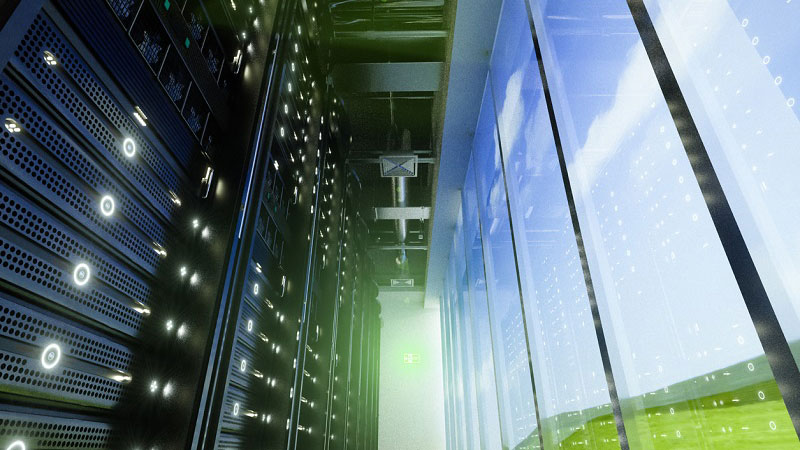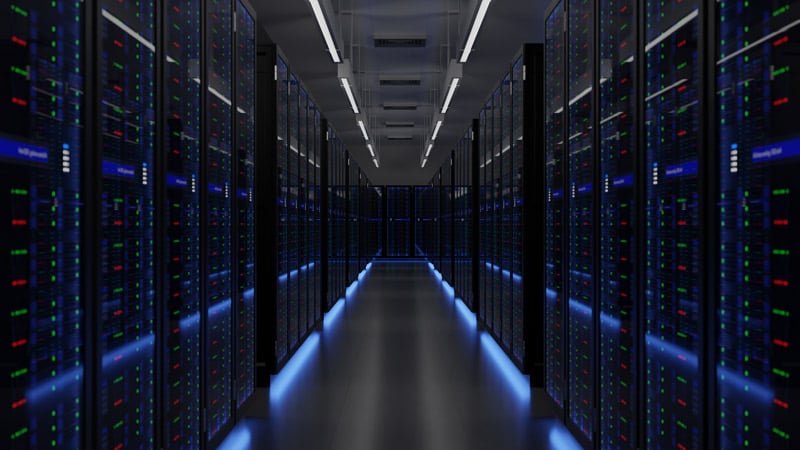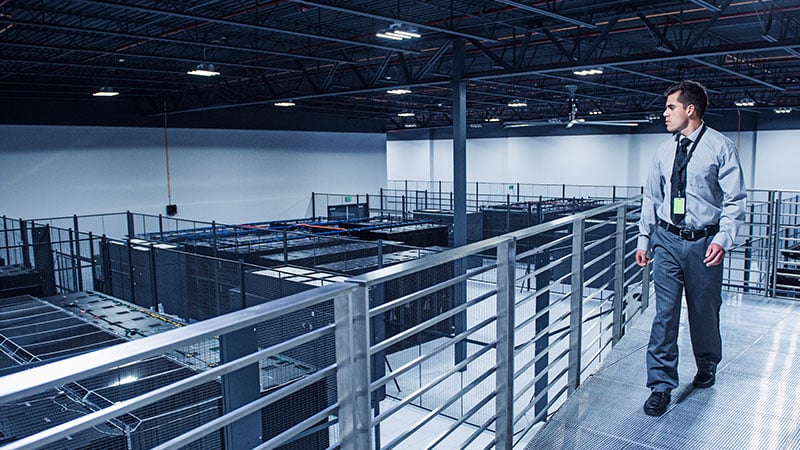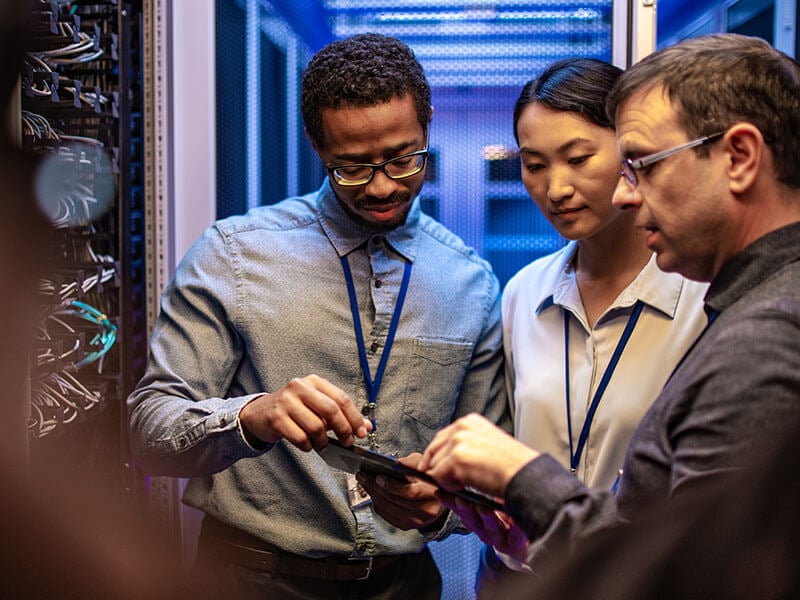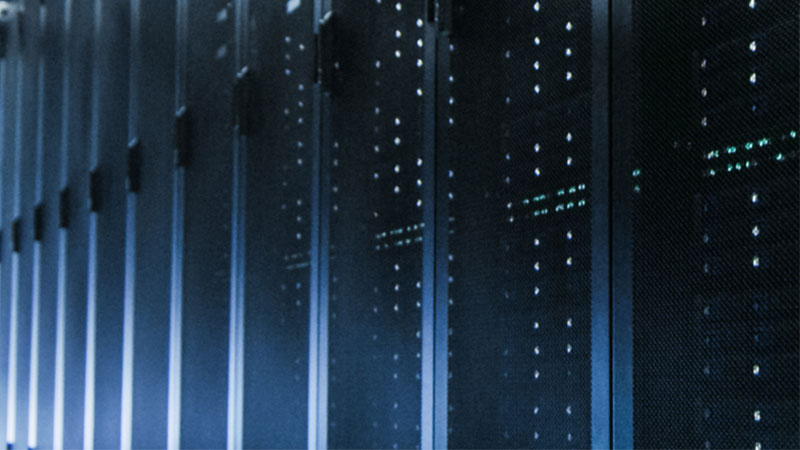Today's critical digital infrastructure industry faces two major forces: the ever-growing demand for data and the real effects of climate change. As the global data and digital infrastructure scales, it must do so responsibly. In light of this, data center operators are adopting a two-tiered energy sustainability strategy. First, they are working to match energy use with 100% renewable energy sources. Second, they are experimenting with operating 24/7 carbon-free, with locally generated, renewable energy.
In addition, the data center has many ways to reduce carbon, water usage, waste, and energy loss. Increasing energy efficiency and decreasing thermal losses can ensure uptime while saving energy. Carbon-free energy can be realized by developing power systems that enable a move to a hydrogen-powered ecosystem. Water consumption can be reduced by developing new thermal configurations with optimized water usage effectiveness.
Finally, solutions that use less and are easily upgradable, recyclable, or can be refurbished help reduce overall data center waste. This article will discuss the proactive steps that colocation operators can take to reduce their reliance on carbon-based energy sources and achieve sustainability goals.
Trends in Data Center Clean Energy
There are several trends in managing critical power infrastructure decarbonization today. First, in managing the challenging landscape of "bring your own power" (BYOP), many municipalities are pushing back against colocation and other data centers due to their perceived carbon footprint. Establishing microgrids or other local sources of power can alleviate this challenge.
Many operators are also deploying energy-saving operating modes and piloting grid services using their UPS (uninterrupted power supply). Operators are looking for ways to reduce diesel generator starts and evaluating alternative clean energy sources such as fuel cells, battery energy storage systems, on-site renewables (wind and solar), and other carbon-free energy sources.
Three Steps to Achieving a Carbon-Free Data Center
Data centers have multiple options for transitioning to a carbon-free future. First, they need to match their current energy use with renewable energy. Then they need to focus on increasing utilization and efficiency. Finally, they must shift away from utility power as the primary data center power source. To achieve this, they can explore the following tactics.
Increase delivered UPS power and efficiency, N+1 utilization, and power engineering
There are three energy-saving modes for a Vertiv™ large power UPS. First is double conversion (VFI), where the rectifier and inverter are active. This helps achieve up to 97% efficiency and guarantees the best power quality. However, it is less efficient than the other two modes of operation. Vertiv large power UPS unit’s ECO Mode has the highest efficiency up to 99%. However, in ECO Mode, only the static bypass supplies the load. Operators should use ECO Mode only when they are confident the input power has high quality and outages are not likely to occur.
Vertiv UPS Dynamic Online Mode (VI) has up to 99% efficiency without the penalty of ECO Mode. By utilizing dynamic online mode, the operator can improve power quality by keeping the inverter active and filtering harmonics. Turning the inverter on without delivering power ensures power quality to the load while delivering higher overall energy efficiency.
Operators should also choose equipment providers that enable the equipment to operate at 100% of rated capacity. Rather than run a 2N architecture which is double the UPS you need running at 50% maximum utilization rate, operators can now increase to using 100% of every UPS. This is accomplished by segmenting loads into those that require the highest level of availability and those that can tolerate lower levels of availability. When a UPS in the reserve architecture is taken offline, the remaining modules operate above their rated capacity while the operator simultaneously throttles back or sheds IT loads that can tolerate lower availability.
Operators should also choose equipment providers that enable the equipment to operate at 100% of rated capacity. Rather than run a 2N architecture which is double the UPS you need running at 50% maximum utilization rate, operators can now increase to using 100% of every UPS. This is accomplished by segmenting loads into those that require the highest level of availability and those that can tolerate lower levels of availability. When a UPS in the reserve architecture is taken offline, the remaining modules operate above their rated capacity while the operator simultaneously throttles back or sheds IT loads that can tolerate lower availability.
Adopt Lithium-Ion Batteries in Data Centers
According to Omdia's latest study, in 2023 and 2024, lithium-ion and lead-acid batteries are expected to have an equal share of the UPS battery market in revenue. After 2024, Omdia expects faster adoption of lithium-ion batteries. Lithium-ion batteries have a smaller footprint and a longer life than lead acid, and the price difference between the two has narrowed considerably.
However, if operators want to use the UPS not just as backup power but as an energy center, they must use lithium-ion batteries. To provide frequency regulation, peak shaving, and more broadly grid services, UPS batteries will be utilized as more than a standard backup application. These services require battery monitoring and increased cycles of charging and recharging, which can be done with lithium-ion batteries but not VRLA.
Value Engineer the Critical Power System
Finally, operators can value engineer the critical power system. Eliminating component-level redundancies in a critical power system helps lower costs and increase system efficiency, reducing annual electricity consumption. Additional capacity can be unlocked by aligning the UPS rating with the breakers used. Overcooling the UPS can be eliminated by allowing equipment operating temperatures to rise to what the equipment can tolerate reliability
Embodied carbon and Life Cycle Assessment (LCA)
Embodied carbon and Life Cycle Assessment (LCA) are two important elements to consider when evaluating the environmental impact of products. Embodied carbon is the total carbon emissions associated with a product's production, use, and disposal throughout its life cycle. This includes emissions from energy consumed during production, transportation, and other activities related to its manufacture and any additional emissions released when the product is disposed of at the end of its life.
Life Cycle Assessment (LCA) is a tool used to quantify and evaluate these environmental impacts. LCA analyzes the potential environmental burdens associated with manufacturing, using, and disposing of a product over its entire life cycle – from raw material extraction to disposal or recycling. When it comes to colocation data centers striving towards sustainability goals, LCA can be used to identify potential opportunities for improvement in areas such as power efficiency and equipment optimization.
By understanding how each component within their data center contributes to embodied carbon levels, operators can create strategies that effectively reduce their consumption while meeting long-term sustainability objectives.
The Path to the CO2 Free Operation: Fuel Cell Integration for Backup and Primary Power
For some time, data centers will rely on diesel generators. But the next step will be to replace diesel generators with renewable energy sources like fuel cells. Hydrogen fuel cell technology is an innovative way to produce clean energy without releasing carbon dioxide emissions. Fuel cells can generate power by combining hydrogen and oxygen from the air through a reaction that produces electricity, heat, and water as its only byproducts. This makes them an attractive solution for data centers searching for carbon-free energy solutions with reliable energy output.
Hydrogen-based fuel cells operate similarly to traditional diesel generators – with a few important differences. For starters, because they require no combustion to generate power, they can run virtually silently with minimal vibration – eliminating some of the noise concerns associated with diesel engines. Additionally, they require far less maintenance due to their non-combustive design, eliminating the need for regular oil changes or frequent filter replacements. Finally, they offer significant cost savings compared to traditional systems due to their high-efficiency rates and lower operating costs over time.
However, hydrogen is not as readily available as diesel. The industry will need a hydrogen infrastructure to be ready before hydrogen fuel cells can be considered standard backup or primary power. Currently, it is possible to utilize a natural gas fuel cell that can power the load and enable the operator to use fuel cells as prime power and the grid as backup creating energy independence.
To achieve no emissions at all, carbon-free energy, the operator would need not just to use fuel cells as prime power but also renewable energy to contribute to the main supply of the load. The UPS would still play an active role in any of these scenarios, the role of the energy center.
Additional Benefits of Data Center Carbon Neutrality
These changes, driven by the goal of becoming more sustainable, offer additional benefits to colocation companies that should factor into their decision-making process.
Expanded capacity:
Operators can increase the utilization of their critical power systems and expand the available power capacity at their sites, offsetting the demand for new capacity.
Lower costs:
Actions can be taken today to lower the operating costs of existing deployments through power system optimization. As the cost of locally generated clean energy decreases, operators can optimize based on energy cost in addition to space, efficiency, and footprint.
Increased location flexibility:
Some cities and utilities are already limiting the power that will be supplied to data centers, and this trend could increase in the future and limit the ability of providers to locate where there is demand. By becoming energy-independent, colos will have the flexibility to locate in critical primary and secondary markets with limited dependence on the local utility.
Concluding Remarks on Maximizing Carbon-Free Energy Sources
Overall, transitioning to a carbon-free data center is not only beneficial for the environment, but it also provides operational and financial advantages. By integrating sustainable technologies such as hydrogen fuel cells into their critical infrastructure, operators can reduce reliance on traditional carbon-based energy sources while meeting their annual PUE target.
Additionally, these systems provide cost savings over time due to high-efficiency rates and require far less maintenance than combustion-based fuels. Furthermore, reducing dependence on carbon-based fuels represents a competitive advantage in the short term. Investing in sustainable solutions will help differentiate an operator’s business from its competitors while demonstrating its commitment to sustainability goals.
Considering all these benefits, any colocation data center looking to reduce reliance on carbon energy sources should seriously consider implementing a carbon-free strategy.
Working with a forward-thinking and innovative infrastructure partner like Vertiv puts you in the position to move forward with proven technologies that allow you to take steps today toward a carbon-free tomorrow. Vertiv stands ready to partner with colocation operators seeking to reduce or eliminate their reliance on carbon energy sources.
For more information, see my recent webinar: Preparing for a Carbon-free Future: Steps Colos Can Take to Reduce Their Reliance on Carbon-based Energy.
For more of the latest in data center critical infrastructure thought leadership, see our latest webinar series "Engineers' Frontier" where our expert speakers cover topics such as the benefits of liquid cooling, the advantages of prefabricated modular solutions, and how to maximize revenues with grid-interactive ups.



